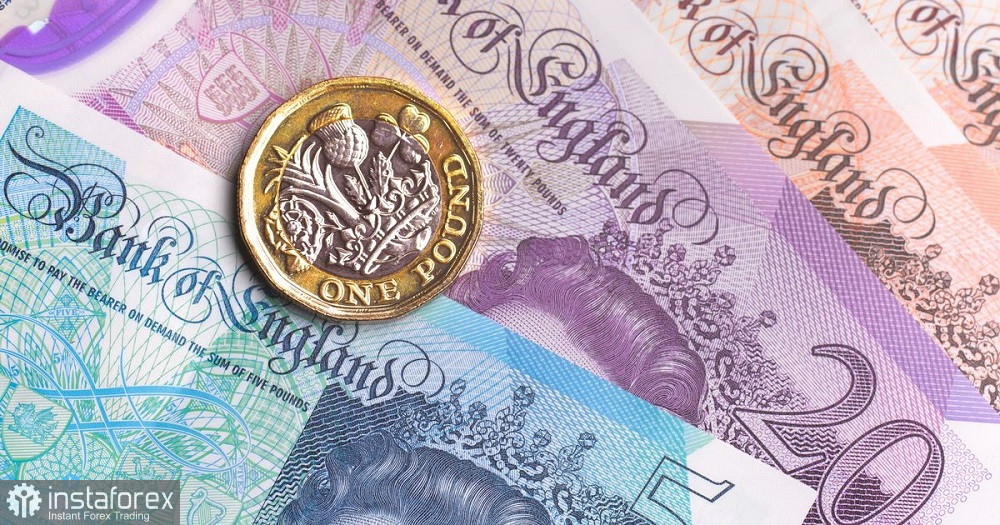The pound and the dollar fluctuate gently in a range of 100 points, starting alternatively from the price corridor's edges. Sellers and buyers of GBP/USD are engaged in a heated battle within this level; the former is attempting to keep the price within the 20th figure, while the latter is attempting to push the price down to the base of the 19th price level. And it is clear from the outcomes of the conflict, which lasted almost three weeks, that no one has emerged victorious. The price of the pair is still fluctuating between 1.1945 and 1.2050, occasionally going above its limits depending on the circumstances. However, sellers cannot fall to the goal of 1.1900 and purchasers cannot achieve the mark of 1.2100 at the same moment.

The pre-vacation season is not the sole cause of the slowdown among GBP/USD traders. Since the buyers of the pair gave up their goals in the middle of December, following the publication of the outcomes of the Bank of England's final meeting in 2022, the "dead season" only indirectly affected this situation.
It is important to highlight that the English regulator carried out the fundamental scenario by taking a hawkish stance. The Central Bank increased the interest rate by 50 basis points while also signaling a future increase in the rate. However, most market participants expressed skepticism over the rate announced by the British Central Bank; several analysts predict that the Bank of England would either lower the pace of tightening monetary policy in 2023 or stop completely.
Many currency strategists concluded after analyzing the minutes of the December meeting that the regulator had moved the focus of its speech to evaluate the dangers and negative effects of tightening the PEPP. Also brought to light is the fact that the Central Bank mentioned the slowing in inflationary increase in a "different line." The first quarter of 2023 will see a slowdown in inflation indices, according to economists at the Central Bank.
The fact that two (out of nine) members of the Monetary Policy Committee voted against hiking the rate further put additional pressure on the pound. They demanded that it be kept at three percent because, in their words, it would be "more than enough" to bring inflation back to the desired level.
In other words, while publicly implementing a fundamental, hawkish scenario at the December meeting, the British regulator did not turn into a supporter of the pound.
The GBP/USD pair reached the six-month price limit on the night of the December meeting, reaching 1.2444. Since September 2022, specifically, when the pound fell to the 1.0345 level due to the budget crisis and political unrest, the price has been steadily rising for several months. The pound has gained more than 2000 points in just 3.5 months, demonstrating its aspirations to reach the 25th position. However, the paradoxical outcomes of the British Central Bank's most recent meeting in 2022 confounded everything: the GBP/USD pair initially dropped by about 400 points, but then became trapped on the cusp of 19 and 20 figures.
I believe that the dollar, whose "well-being" will depend on the dynamics of important US macroeconomic data, will determine the future course of the pair in the medium run.
Such a disposition puts Non-farm, which will be released tomorrow, January 6, front and center. Preliminary predictions state that the overall trend of the December indicators should be similar to that of the November ones. The unemployment rate should stay at 3.7%, and 210 thousand more individuals should find work in non-agricultural sectors (an increase of 263 thousand was recorded in November). Salary indicators should follow the release's trajectory (+5.0% y/y, 5.1% in November) as well. The GBP/USD bears may attempt to penetrate the defense near the 1.1950 level and move to the base of the 19th figure if the report is released in the green zone. In all other scenarios, the pair is likely to keep drifting along the corridor stated above as it gets closer to its upper border (a temporary breakthrough to the 1.2070 mark is not excluded).
The British pound currently lacks "own" justifications for continuing the northern movement. The GBP/USD northern trend was halted by the actual split in the Central Bank Committee and the statement's cautious phrasing. The dollar, which is currently in standby mode, is now in charge of the initiative.
Technically speaking, the pair is situated above the Kumo cloud on the daily chart, between the middle and lower lines of the Bollinger Bands indicator, and simultaneously between the Tenkan-sen and Kijun-sen lines. In other words, the method lacks any obvious cues, necessitating a wait-and-see attitude. The 1.1950 level (the actual boundary of the three-week price range) is the closest level of support, and the 1.1900 goal is the key price barrier (the upper border of the Kumo cloud coinciding with the lower line of the Bollinger Bands indicator on D1). The number 1.2100 serves as the resistance level (the average line of the Bollinger Bands on the same timeframe). However, 1.2070 has been the actual price ceiling for the past approximately three weeks.
 English
English 
 Русский
Русский Bahasa Indonesia
Bahasa Indonesia Bahasa Malay
Bahasa Malay ไทย
ไทย Español
Español Deutsch
Deutsch Български
Български Français
Français Tiếng Việt
Tiếng Việt 中文
中文 বাংলা
বাংলা हिन्दी
हिन्दी Čeština
Čeština Українська
Українська Română
Română

